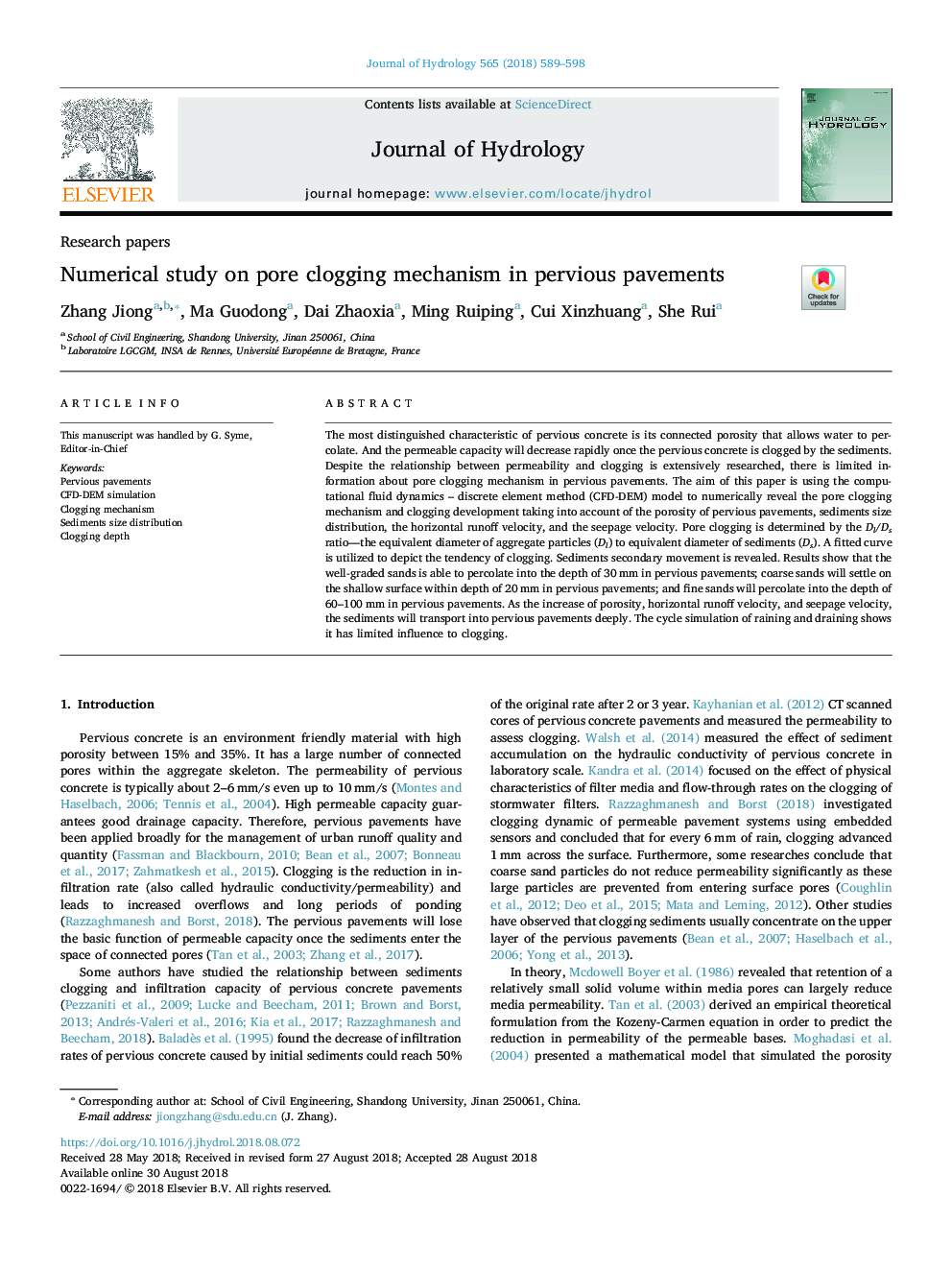| Article ID | Journal | Published Year | Pages | File Type |
|---|---|---|---|---|
| 10118246 | Journal of Hydrology | 2018 | 10 Pages |
Abstract
The most distinguished characteristic of pervious concrete is its connected porosity that allows water to percolate. And the permeable capacity will decrease rapidly once the pervious concrete is clogged by the sediments. Despite the relationship between permeability and clogging is extensively researched, there is limited information about pore clogging mechanism in pervious pavements. The aim of this paper is using the computational fluid dynamics - discrete element method (CFD-DEM) model to numerically reveal the pore clogging mechanism and clogging development taking into account of the porosity of pervious pavements, sediments size distribution, the horizontal runoff velocity, and the seepage velocity. Pore clogging is determined by the Dl/Ds ratio-the equivalent diameter of aggregate particles (Dl) to equivalent diameter of sediments (Ds). A fitted curve is utilized to depict the tendency of clogging. Sediments secondary movement is revealed. Results show that the well-graded sands is able to percolate into the depth of 30â¯mm in pervious pavements; coarse sands will settle on the shallow surface within depth of 20â¯mm in pervious pavements; and fine sands will percolate into the depth of 60-100â¯mm in pervious pavements. As the increase of porosity, horizontal runoff velocity, and seepage velocity, the sediments will transport into pervious pavements deeply. The cycle simulation of raining and draining shows it has limited influence to clogging.
Keywords
Related Topics
Physical Sciences and Engineering
Earth and Planetary Sciences
Earth-Surface Processes
Authors
Zhang Jiong, Ma Guodong, Dai Zhaoxia, Ming Ruiping, Cui Xinzhuang, She Rui,
